|
Building Technical Structures:
We at Dieselbikes are in the process of
building a (continuing) technical guide to help you, the rider build
challenging mountain bike structures to increase your riding skills.
We do not want to limit our objectives by classify this information as
“stunts” or “freeriding related”, but rather provide ideas to help
build technical structures for all rider skill levels.
The information listed on this website is
for informational purposes only and does not constitute a standard,
specification or regulation. If you download and/or use this
information, we at Dieselbikes are not legally responsible for any injury or
death.
Three Important Factors to
Consider:
#1: Selecting your lumber.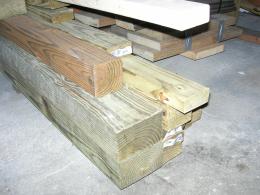
This is one of the most important steps
for designing and building your technical structure. Weather
conditions in your area will determine the proper lumber grade and type of
wood to choose. In New England due to our four seasons, typical the
use of PT-ACQ pine grade No.3 is used for main structure supports and/or
stringers. Decking can be un-treated wood, but this will be dependent
on structure type and intended use.
Un-treated Lumber:
Most lumber supply stores and/or outlets
(example: Lowes) carry two basic categories of wood; "Select" or "Common".
"Select" lumber is typically used for
finish work and is broken down into the following grades:
- Grade A or B typically have minute or no
blemishes.
-
Grade C typically has some minor defects such as small knots.
-
Grade D typically has larger imperfections.
"Common" Lumber is typically used for
general-purpose construction and is broken down into the following grades:
- Grade No.1 contains tight knots and few
blemishes.
-
Grade No.2 contains larger knots and blemishes.
-
Grade No.3 has loose knots, knotholes, and other flaws.
-
Grade No.4 is low quality
-
Grade No.5 where the appearance is not important.
Pressure Treated Lumber (PT):
Most lumber supply stores and/or outlets
(example: Lowes) carry Amine Copper Quat (ACQ) and/or Copper Azone (CA)
chemically treated lumber better know as PT. ACQ-PT is the more typical
found here in New England, but this will vary state to state. PT Lumber is
categorized as “Common”, so the same grades No.1 ~ No.5 applies.
Wood Type Selection:
There are two (2) general type categories
of wood; Hardwoods and Softwoods.
Hardwoods:
Unless you plan on making your technical
element just for show, it will not be outside and have an unlimited amount
of money to spend, we suggest you do not use hardwoods. However, hardwoods
such as oak, white oak and cypress are naturally resistant to decay over
long periods of time. Many hardwoods are suitable for exterior
structures but cost and fabrication becomes major factors.
Softwoods:
Pine:
It has uniform texture, easy to work with and finishes well. It has a
high resistance to shrinkage, swelling and warping. Can be pricey per
linier foot but is a general available off the shelf. Pine does decay
over short periods of time and in some cases may need to be treated.
Hemlock:
Light in weight, uniformly textured. Easy to work with and has low
resistance to decay and nonresinous. Excellent choice for ladder
bridge decking.
Fir:
Works easy and finishes well. Uniform in texture and nonresinous, plus
has a low resistance to decay.
Redwood:
Light in weight, durable and easy to work. Has a natural resistance to
decay. You can use this wood for anything outdoors, but you better be
ready to shell out some cash.
Spruce:
Strong, hard and finishes well with low
resistance to decay. Has moderate shrinkage and light in weight.
Good material selection for Sea Saws.
Cedar:
Easy to work with and uniform in texture with very high resistance to decay.
Similar to redwood for using it outdoors, but you better be ready to shell
out some cash.
#2: Selecting your Hardware
Another important aspect in designing a
technical structure is appropriate hardware. With so many options to choose
from, one can be left with questions. We have listed below some general
hardware options to choose from but ultimately it will depend on the type
and location of the technical structure you are building. In short, much of
the same hardware required to build your own technical element is much the
same as building a wooden deck in your backyard.
Exterior Screws: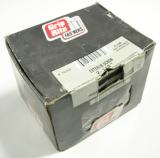
Typically exterior screws are either
galvanized or chemically treated. The choice material for exterior screws is
steel but there are composite with the same or stronger properties to resist
vibration and weather over long periods of time. A good rule of thumb is to
use 2-1/2 inch or longer screws for most technical projects. Screws that are
shorter then 2-1/2 may not have enough “bit” (distance threaded into the
wood) and eventually put-out.
Exterior Nails: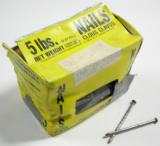
Typically exterior nails are either
galvanized or chemically treated. The use of “Ring Nails” or “Framing Nails”
is recommended. These nails ensure excellent grip when installed correctly
and resist backing out over time as the woods expands and contracts due to
changing weather and/or temperature conditions. A good rule of thumb is to use
COMMON 16D SIZE nails or larger. They will provide excellent support to
carry applied loads to the structure.
Lags (Lag Screws):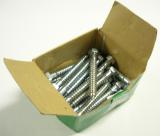
Typically Lags are available galvanized
for exterior use. Lags provide excellent support and load carrying
properties. When ever using lags to secure two (or more) pieces of wood, you
should always place a flat washer between the wood and the lag head to
ensure even head pressure is applied as you secure the pieces of wood
together. A good rule of thumb is to
use 3/8”x4” Lags (or larger) for any structures that are elevated 4 or more
feet off the ground or have moving/pivot points. Also Lags should be used if
you are concerned about the weight or span of the structure you build.
Carriage Bolts: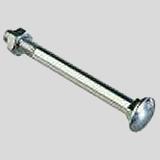
Typically Carriage Bolts are available
galvanized for exterior use. Carriage Bolts are ideal for securing ladder
bridge supports or used on fabricated transitions. They will provide
structural support and absorb enormous loads. When ever using Carriage
Bolts, the use of flat washers for both the bolt head and nut side should be
used to ensure even pressure as you secure the wood. The use of a LOCK NUT
is suggested so that the Carriage Bolt assembly is shielded from vibration.
Joist Hangers: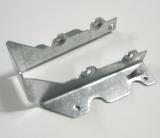
If you plan on build an elevated platform
similar to a deck, you should consider using Joist Hangers. They will
provide extra support for your elevated structure and help support stringers
during load (weight of you and the bike) transfers. Also depending on how
large your platform is, joist hangers will help reduce structural movement
and absorb vibration.
#3: What not to Do
We may be restating the obvious but here
are a few things of what not to do when building a wooden mountain bike
technical structure.
a. If you never built a technical
structure before, start small, then make the next one bigger.
b.
You should not build your stunt from wood that is rotting and/or decaying
c.
Using shipping pallets as a landing transition, elevated platform or
ladder bridge is not advised. Shipping pallets are typically design to carry
a static loads (never changes), not dynamic loads (consistently changes).
d. Never use nails to secure a joint that will carry the weight of your
structure. Example is using nails to secure a stringer to the side of a
vertical support. No matter how many nails you use, (even if you toe-nail
them) they will pull out.
e.
Do not use interior nails/screws.
f.
More to come…
|